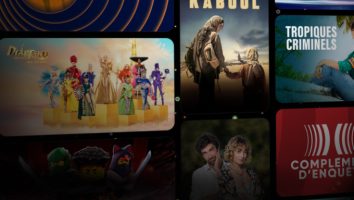Cowboy Bebop
Video: US$19.98 (English dub),
US$24.98 (subtitled)
Release date: September 14
Distributor: Pioneer
Studio: Bandai Entertainment
American fans of anime, the Japanese animation form known for its lush, stylized design and highly developed story lines, can look forward to the State-side video launch this month of Cowboy Bebop, one of Japan’s most popular animated series.
Thirteen of the 26 episodes produced in the land of the rising sun will be released in the U.S. by Bandai, with two episodes per tape. If the concept translates to American audiences, a pair of space-traveling bounty hunters named Spike Siegal and Jet Black may become Power Rangers for a new millennium. Well, almost.
According to Nobu Yamamoto, sales and marketing manager for Bandai (which brought Power Rangers over in 1993), the demos for anime in the U.S. are primarily ‘high school to university students who are very intelligent and into computers and the Internet.’
Yamamoto recognizes that ‘Japanese animation is still a niche market [in the U.S.],’ and Bandai plans to play to this base where it lives-through paid advertising in magazines such as Sci-Fi Entertainment, Amazing Stories and Comic Buyer’s Guide.
Promotions and screenings are scheduled for game, comic book and animation conventions. These on-site appearances are an ideal way to introduce the story, as well as the use of high-tech computer animation-rare for a genre that has mostly relied on traditional
2-D cel animation. Bandai will use the trade show opportunities to spread the word via giveaways of T-shirts and CD cases.
The next step is to build on anime’s loyal but narrow State-side audience base. Cowboy Bebop arrives on home video just as Princess Mononoke (along with Titanic, the only movie ever to gross US$150 million in Japan) is about to make its U.S. debut in theaters. The family-oriented picture, featuring the voices of Claire Danes, Minnie Driver and Gillian Anderson, promises to expand the audience for Japanese animation in the U.S. when it bows in October.
Hard-core American fans appreciate the differences between anime and Western-style toons, but Yamamoto believes attracting a wider audience means stressing the similarities. ‘Nobody recognizes Pokémon as Japanese animation,’ he says. ‘It’s more like just another cartoon in the U.S. If they don’t characterize our product as Japanese animation, that’s success for us.’
Bandai will have to attract a significant crowd of teens and young adults to match that kind of success. Unlike Pokémon or Power Rangers, Cowboy Bebop won’t have animation’s traditional base audience of kids-or at least Bandai can’t actively pursue it. ‘Technically, I can’t recommend it [for kids],’ says Yamamoto, citing distributor Pioneer’s ’13 and up’ label for the video. The rating is based on ‘a little violence’ and of some of the characters smoking. Says Yamamoto: ‘In Japan, it’s not a big deal, but in the U.S., it’s a big deal.’





















